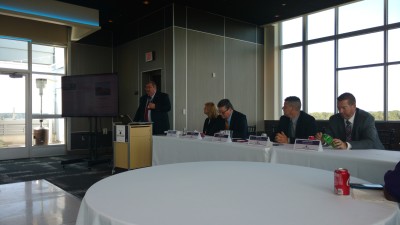The purpose of this session was to discuss the consequences when emergency personnel and police officers drive too fast when responding to a call to assist at an accident scene or distress call. In the MML’s Liability & Property Pool, there has been an increase in the number of accidents when officers are driving to assist at a scene because the officers are driving too fast. By failing to drive safely, thereby getting into an accident themselves, there is therefore a greater delay in responding to that original distress call.
LEAF (Law Enforcement Action Forum) legal advisor Audrey Forbush and LEAF coordinator Gene King, gave an overview as to what is allowed under the law when vehicles are in emergency mode. They stressed the importance of upper management prioritizing what constitutes an emergency and what does not. It is also up to management to emphasize the importance of safe driving at all times, not only to ensure the safety of officers, but also to ensure the safety of the general public.
The audience then saw demonstrations from three different police chiefs who are currently using tracking technology to monitor the speeds of their officers at all times. Don Mawer of Frankenmuth, Geoff Smith of Sturgis and Elmer Hitt of Jackson, all gave demonstrations. As a result of using this technology, these police chiefs have witnessed a significant decrease in the number of times their officers are driving too fast. The culture in their departments has completely changed: there is more consistent safe driving, and there is no resistance to using this technology from the rank and file, as there had been in the past. This technology also tracks whether the officers are wearing seat belts, and where they spend most of their time patrolling. This technology is just one more tool that upper management can use to ensure safe driving of their employees.

